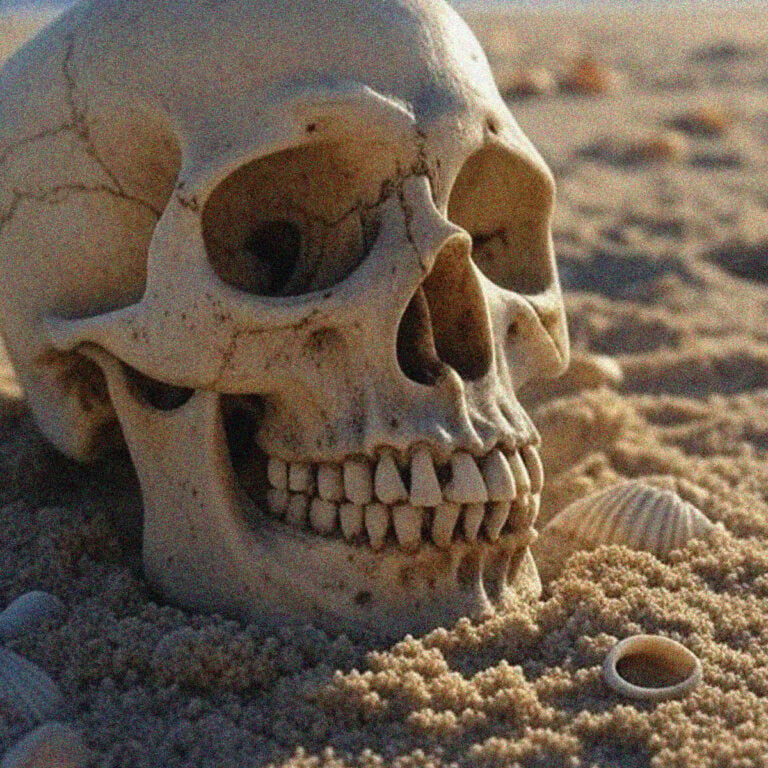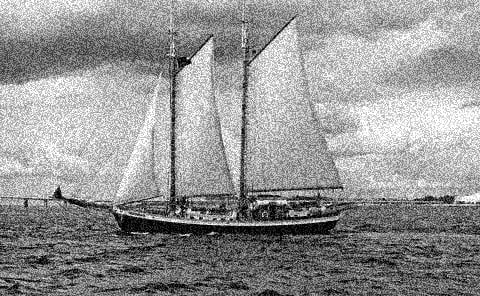LONGPORT, N.J. — A skull that washed ashore in 1995 and baffled investigators for decades has finally been identified as the remains of a 19th-century ship captain who perished during a storm off the New Jersey coast more than 180 years ago, according to an article published this week in Popular Science.
Dubbed “Scattered Man John Doe,” the remains were found in parts across nearly 30 years: first a skull in Longport in 1995, then bones in Margate in 1999, and finally additional fragments in Ocean City in 2013. Despite forensic analysis and law enforcement efforts, the identity remained a mystery—until now.
Authorities confirmed the remains belonged to Henry Goodsell, a 29-year-old merchant ship captain who died in the wreck of the schooner Oriental during a storm on December 4, 1844. The identification was made possible through a collaborative effort involving modern genetic testing, historical research, and newspaper archive analysis.
The breakthrough came after New Jersey state law enforcement contacted the Investigative Genetic Genealogy Center at Ramapo College in 2023. Bone samples were sent to Intermountain Forensics, a nonprofit specializing in missing person identifications.

“Scattered Man John Doe wasn’t a victim of foul play—he wasn’t even a comparatively recent death,” Popular Science reported.
Student researchers link DNA to 19th-century shipwreck
Undergraduate students at Ramapo College began cross-referencing genetic data with archival records. Ancestry links traced the remains to families in 1600s Connecticut, specifically Litchfield and Fairfield counties. While reviewing newspaper archives, students located two articles from December 1844 reporting the loss of the Oriental.
“The schooner Oriental… was lost on the evening of the 4th on Brigantine shoals and all hands with her,” reported the York Democratic Press on December 20, 1844.
The decades-long mystery was solved nearly two centuries after Captain Goodsell and his crew were lost at sea.
After nearly 30 years and modern forensic analysis, a New Jersey beach mystery ends with the identification of a ship captain lost in an 1844 storm.
More information from RAMAPO college:
Skeletal remains that were found on a number of beaches in South Jersey between 1995 and 2013 are now confirmed as belonging to the captain of the 19th century schooner Oriental, thanks to the work of the New Jersey State Police (NJSP) and Ramapo College of New Jersey Investigative Genetic Genealogy Center (IGG).
A skull washed ashore in Longport in 1995, and more bones were found in Margate in 1999, both in Atlantic County. In 2013, additional remains were found in Ocean City, Cape May County. Scattered Man John Doe went without a name for 30 years since traditional methods of investigation could not deliver an identification.
In the fall of 2023, the New Jersey State Police partnered with the Ramapo College IGG Center to see if they would be able to use investigative genetic genealogy to solve the mystery of the scattered bones along NJ beaches. That November, a sample was sent to Intermountain Forensics, who uploaded the sample to GEDmatch and FamilyTreeDNA in February of 2024.
That is when Ramapo College undergraduate students conducting field studies and IGG Center certificate program students began their research. They found ancestry dating back to the 1600s, with genetic relatives hailing from Litchfield and Fairfield counties in Connecticut.
Throughout the remainder of 2024 to February of 2025, students from the certificate program volunteered their time to continue finding ancestral ties to Connecticut. They also began looking into shipwrecks off the coast of New Jersey. They discovered clips from two newspaper articles dated December 20 and December 24, 1844. York Democratic Press, Friday, 12/20/1844 – page 2Boston Daily Bee, Tuesday,12/24/1844 – page 4
The students learned that five crew members were aboard the Oriental, which departed from Connecticut en route to Philadelphia, PA, to deliver 60 tons of marble for use by Girard College, a college preparatory boarding school that opened in 1848. The ship was wrecked off the coast of Brigantine Shoal in 1844. It was reported the ship likely sprung a leak and went down less than one mile from the shoreline, and all crew members died. The captain of the ship was 29 year-old Henry Goodsell.
Given the mounting evidence discovered by students in the IGG Center, the candidate Henry Goodsell was delivered to the NJSP for consideration.
On March 7, 2025, the NJSP collected a family reference sample from a great-great grandchild of Henry Goodsell. His identity was confirmed by the NJSP on April 8, 2025.
“Identifying human remains is one of the most solemn and challenging responsibilities law enforcement is charged with,” said Chief of County Detectives Patrick Snyder at the Atlantic County Prosecutor’s Office. “Law enforcement works hard knowing that behind every case is a promise: that no one will be forgotten, and that we will pursue the truth until families have the answers they deserve.”
This is one of the oldest cold case identifications using investigative genetic genealogy. “Using modern genealogy testing to identify bone fragments from the 19th century is a powerful reminder of our unwavering commitment to resolving cases no matter how old,” said Colonel Patrick J. Callahan, NJSP superintendent. “The ability to bring answers to families—even generations later—shows how far science and dedication can take us. Our partnership with Ramapo College has been instrumental in making this possible, and we are incredibly proud of the meaningful progress we continue to make together.”
While the findings in this case did not resolve an unsolved crime, Cape May County Prosecutor Jeffrey Sutherland is pleased that it did uncover a fascinating piece of local history. “The hard work of Ramapo College’s IGG Center and working with the New Jersey State Police Cold Case Unit has demonstrated the power and accuracy of this new technology combined with classic detective work in solving complex cold cases that will bring offenders to justice and provide closure to victim’s families.”

